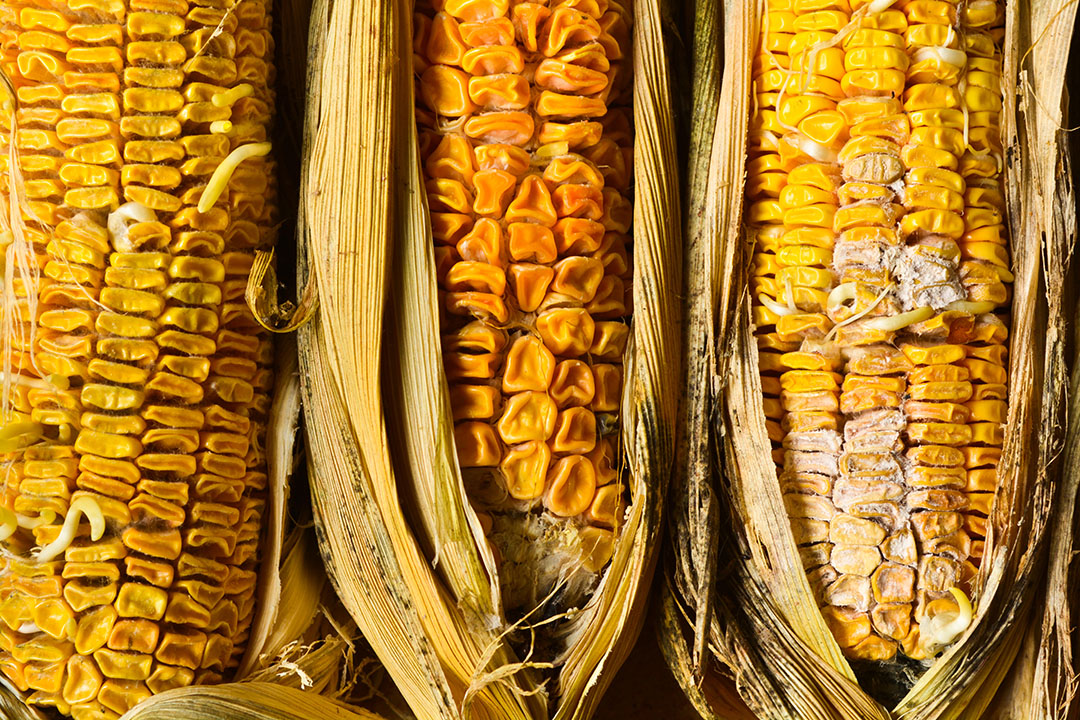Middle East: Spike in mycotoxin levels

A spike in mycotoxins in the Middle East and a slight improvement in Europe. These are just a few conclusions from the World Mycotoxin Survey.
Animal nutrition company Biomin is known for its annual comprehensive Mycotoxin Survey. Thousands of samples are tested throughout the year for the presence of the most important mycotoxins. These large datasets give a reliable and sound overview of the mycotoxin risks for all regions around the world, which help animal nutritionists, farmers and commodity traders in making better strategic decisions, improve livestock performance and to save money.
Risk levels and maximum threshold levels
The latest results (Q3, 2018), released at the end of October, show a shift in contaminated samples and risk levels for the main regions. The risk levels are as follows, based on the contamination level of all mycotoxins in the total samples.
- < 12.5% is low risk
- 12.5% – 25% is moderate risk
- 25% to < 50 % is high risk
- 50% to < 75% is severe risk
- > 75% is extreme risk
Region breakdown
For Europe, the risk level for Q3 is high (47%), but decreased from Q2 (51%) and Q1 (53%). This is because in Europe, the tested samples were cleaner and contained less aflatoxins (Afla), zearalenone (ZEN), deoxynivalenol (DON), T-2 toxins (T2), fumonisins (FUM) and ochratoxin A (OTA).
For North America, we also see positive results and a lower risk level when we move into the last ends of 2018. Compared to the first half of this year, the results show a decrease in the percentage of aflatoxin-contaminated samples. This moved from 12% in Q1, to 26% in Q2 to 4% in Q3. Also for the other mycotoxins there is a large drop in contamination levels seen.
For South America, it is a bit of a different story. The risk level increased in Q3 to extreme (from being severe earlier), mainly due to the higher aflatoxins. DON and FUM levels found in the mixed samples. The contamination levels in Q3 are a bit better than the overall contamination levels for this region in 2017.
For Central America, the results showed less contamination from aflatoxins, ZEN and FUM. This is a bit better than the quarter before, but worse from Q1 when the risk level was ‘only’ 52% for this period. When we look at the results per year, we see that since 2013, this region was always in the extreme risk zone.
For Africa (excluding South Africa) we notice that no contamination was found for aflatoxins in Q3, but high levels of ZEN, SON and FUM was found. When we look at the results per year, we see that since 2014, this region moved up from having an extreme risk to having severe risk. Please note that the number of samples tested for this region is low.
For South Africa alone, more samples were tested than in the other African countries, and the Q3 results show a slight increase in the contamination levels, especially for ZEN and DON. A remarkable drop in the OTA levels is seen, from 18% in Q2 to 5% in Q3 of this year. The overall contamination level of OTA in 2017 was 15%. The risk level for this region is unchanged and remains severe.
The Middle East is worrying, with a risk level of 97% (extreme) and extreme high levels of ZEN (905) and DON (97%) in Q3. The highest ppb level of DON found was 1490ppb (max threshold level is 150ppb). For FUM this was 2407ppb (max threshold level is 150ppb).












